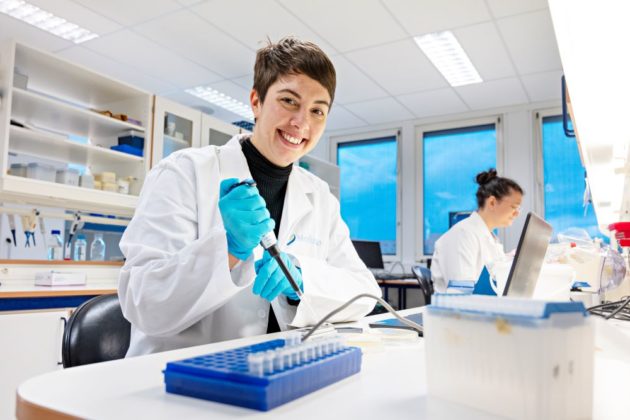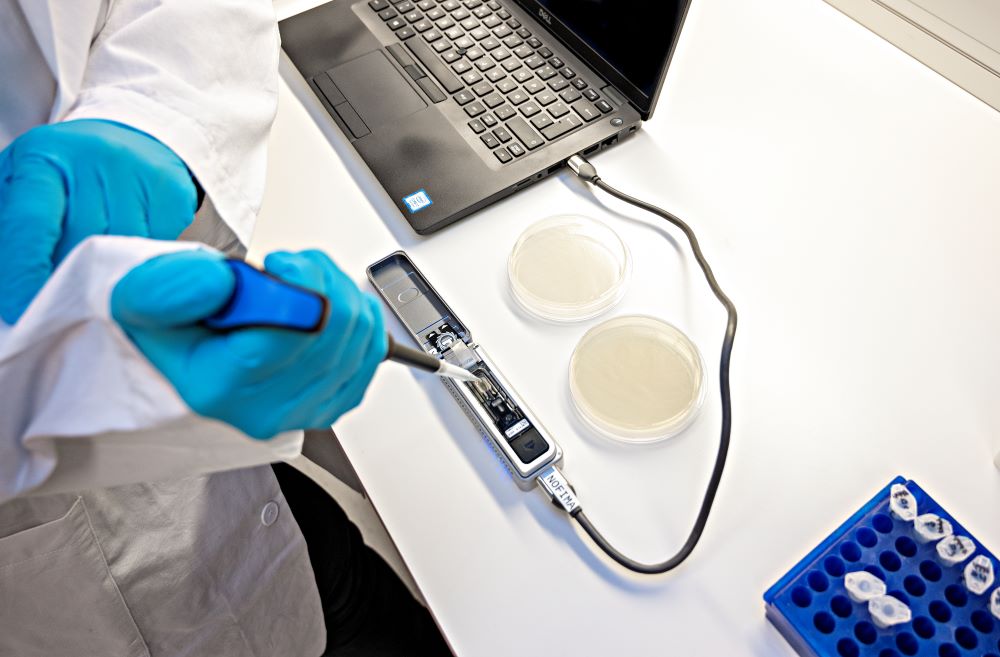A new and quick sequencing technology will provide substantial advantages for the food industry

Listeria monocytogenes is a big challenge for food producers as it can survive and grow in food products with a long shelf life and has a high mortality rate in humans. Researchers at Nofima established and evaluated a method that is substantially quicker than the one currently used to detect the bacterium. This can be of great economic importance for the food industry and prevent human disease.
The research team at Nofima showed that it was possible to detect Listeria in a sample after only four hours of enrichment using a small, handheld sequencing device (MinION from Oxford Nanopore Technologies). This is 20 hours faster than using the traditional enrichment method for the detection of this foodborne pathogen. In addition to Listeria, other microorganisms from the processing environment can be detected at the same time when applying the sequencing approach. Not only is this cost effective but also provides information on the big microbiological picture in a food production plant.
– We investigated and compared different sequencing technologies in order to obtain quicker results regarding the presence or absence of Listeria in a sample. We were also interested in whether the sequencing method is able to differentiate between distinct Listeria types. A result on whether or not Listeria was present in a sample should ideally be provided before the start of the next work day in order for countermeasures to be implemented. It is especially important that equipment and surfaces, on which Listeria was detected, are thoroughly cleaned and disinfected, says Eva Wagner, who is a postdoc at Nofima.
Listeria monocytogenes – a challenge for the food industry
Listeria monocytogenes is one of the biggest challenges the Norwegian food industry has to face. Every year enormous resources are used to fight this bacterium. The control of this foodborne human pathogen consists of detecting and monitoring it in food processing environments since it tends to settle and build a reservoir there from which food products are contaminated. It is important to know where the bacterium is in order to track it, use countermeasures and avoid contamination of food products that are sold on the market.
Listeria is found in soil and water but not least in foods such as fish, meat, fruits and vegetables. Products that are at high risk to be contaminated with Listeria are predominantly cold-stored products with a long shelf life, that are not heated prior to consumption and that favor the growth of the bacterium. When a contaminated product is eaten, listeriosis can be caused, which is a serious disease with mortality rates of 20-30%. Elderly people over the age of 65, people with weakened immune systems and pregnant individuals are at special risk to suffer severely from listeriosis.
Nowadays it takes 24 hours to get a result
The traditional enrichment method for the detection of Listeria monocytogenes involves the cultivation of a sample taken from the food processing environment or a food product in selective medium that favors the growth of the bacterium. This process is very laborious and can take from a minimum of 24 hours to several days and in the meantime production will continue. This means that food products can be contaminated and humans can be infected with Listeria. Food producers will receive results on whether or not Listeria was detected in their samples but the currently used method is not able to distinguish between apparently similar Listeria strains.
Extremely useful method
– The results we obtained with the rapid sequencing method bring us closer to our research goal and provide enormous opportunities for the Norwegian food industry, says Nofima-researcher Birgitte Moen.
The team of researchers at Nofima consider the use of the investigated method to be extremely useful for the industry. The fact that the method provides quick answers is the key itself. Traditional labor-intensive detection methods for microorganisms are barely compatible with modern food production and processing circumstances with a rapid turnover.
– The next step is to collect real samples from the industry and test the method with them, Birgitte Moen explains.
Applying new sequencing technologies could be of great importance to imply more effective and proactive measurements against Listeria in the food industry to prevent contamination and recall of food products as well as financial losses and human listeriosis cases.

New methods using sequencing technologies
Differentiating Listeria strains is a very relevant aspect to ensure precise tracking. Using an even more sensitive sequencing technology (Illumina), it was possible to predict whether there was more than one Listeria type in a sample based on genetic differences.
– New sequencing technologies are used to determine the genetic code (DNA) and thus identify microorganisms. This will make today’s extensive control operations in the food industry faster, more precise and more cost effective, says Annette Fagerlund.
Fagerlund is a researcher at Nofima and leads the PathoSeq project, a three-year research project where the goal is to help Norwegian food producers to establish faster, more sustainable, cost effective and targeted control routines for foodborne pathogens.
About the research
Eva Wagner is the first author of a study that has recently been published in the scientific journal Applied and Environmental Microbiology. Nofima researcher Birgitte Moen led the study, which investigated possibilities to combine traditional detection methods with new sequencing technologies.
The research is conducted in PathoSeq

